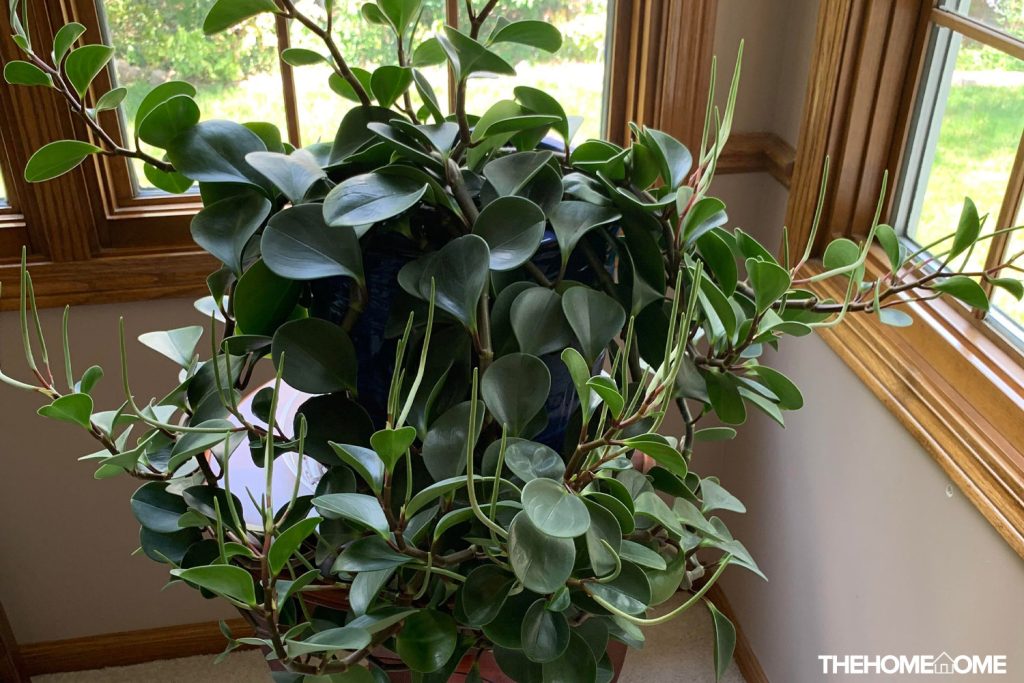The peperomia obtusifolia, otherwise known as the baby rubber plant is one of the most common ornamental plants you’ll find today. The plant possesses all the qualities of loving plants, and we are not surprised, they are becoming more popular and loved.
The plant has succulent-like foliage, is fast-growing, and is a low maintenance plant, even for beginners. The plant has similarities to hevea brasiliense (rubber plant) and this is why it is referred to as a baby rubber plant. The plant fits well in hanging baskets as well as pots.
Growing the baby rubber plant comes off easy, however, a care guide on how it should be properly done will give your plant good growth. The best obtusifolia care and propagation guide have been provided to help you do gardening better.
Peperomia Obtusifolia Plant Explained
The peperomia obtusifolia is an epiphyte that is native to the rain forests of South America. The plant, due to its similarities with the original rubber plant and pepper plant is oftentimes referred to as baby rubber plant and pepper face.
The plant is distinguished by its bright, green leaves and has the appearance of a succulent. It has fleshy stems and a thick, upstanding body.
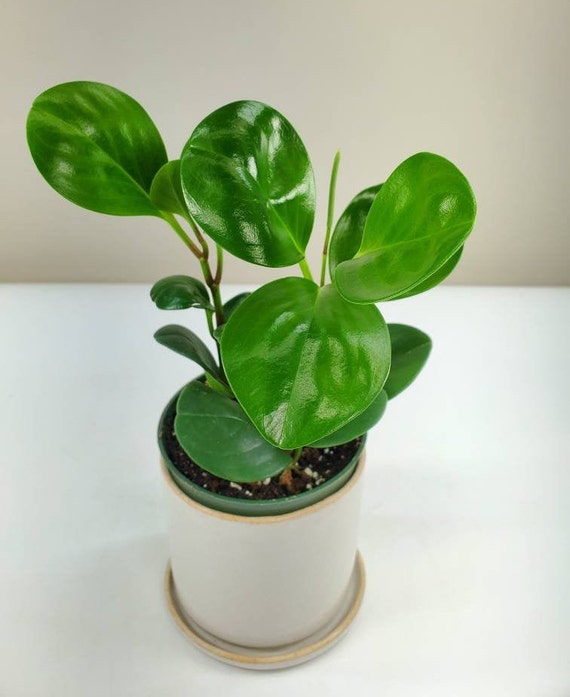
Obtusifolia is a fast-growing plant that can reach a height of 14 inches. This plant comes in a variety of variegated forms, so you can have more than one type of obtusifolia in your space.
| Common name | Baby rubber plant |
| Scientific name | Peperomia obtusifolia |
| Height | 14 inches |
| Plant type | Perennial |
| Temperature | 64 to 75 degrees F |
| Soil type | Well-draining soil |
| Origin | South America |
| Toxicity | Non-toxic |
Peperomia Obtusifolia Propagation
Propagating the peperomia obtusifolia comes off as easy, just like its care.
However the best method for propagating this beauty is via the stem cutting method, they can be propagated via leaf cutting too, like many other peperomia plants, however, this will only work if you are growing the original peperomia obtusifolia, like we are.
The fastest method between these two is stem cutting, leaf-cutting can be slow, and however, it will still grow just as much as you want it to.
Needs For Propagation
- A healthy and mature Peperomia obtusifolia
- Sterilized blade
- Pot
- Well-draining potting mix
1. Stem Cutting
- With the use of a sharp and sterilized blade (knife, scissors, etc) make a stem cutting of about 3 to 4 inches long.
- Detach the leaves at the bottom of the stem, leaving only two to three at the top.
- Pre-water your soil and then place your plant into it. Cover the plant with a transparent plastic bag, this will help it retain moisture, afterwards, place it in a location where it can get bright, indirect light.
- Your cutting will develop its rooting system in 2 to 3 weeks.
2. Leaf Cutting
- Cut out as many leaves as you want to replant from a healthy and mature mother plant. Ensure this is done with a sterilized blade to prevent the transfer of bacteria and pests.
- Prepare a well-draining potting mix and water it before the plant goes in. you can make use of a shallow tray or a large pot, this will allow you to plant all the leaves together at first.
- Make holes in the soil and place the leaves inside it. After this, cover up the remaining soil. Cover up the container in which the plants are to help keep in humidity.
- In 3 to 4 weeks, your plants will begin to develop their rooting systems, you can then transplant to their pots.
3. Water
The obtusifolia can be propagated in water; you only have to put it in water, after making your stem cutting. In about 2 to 3 weeks, it will develop roots, and you can then transfer it to a pot of soil (works for both leaf and stem cutting)
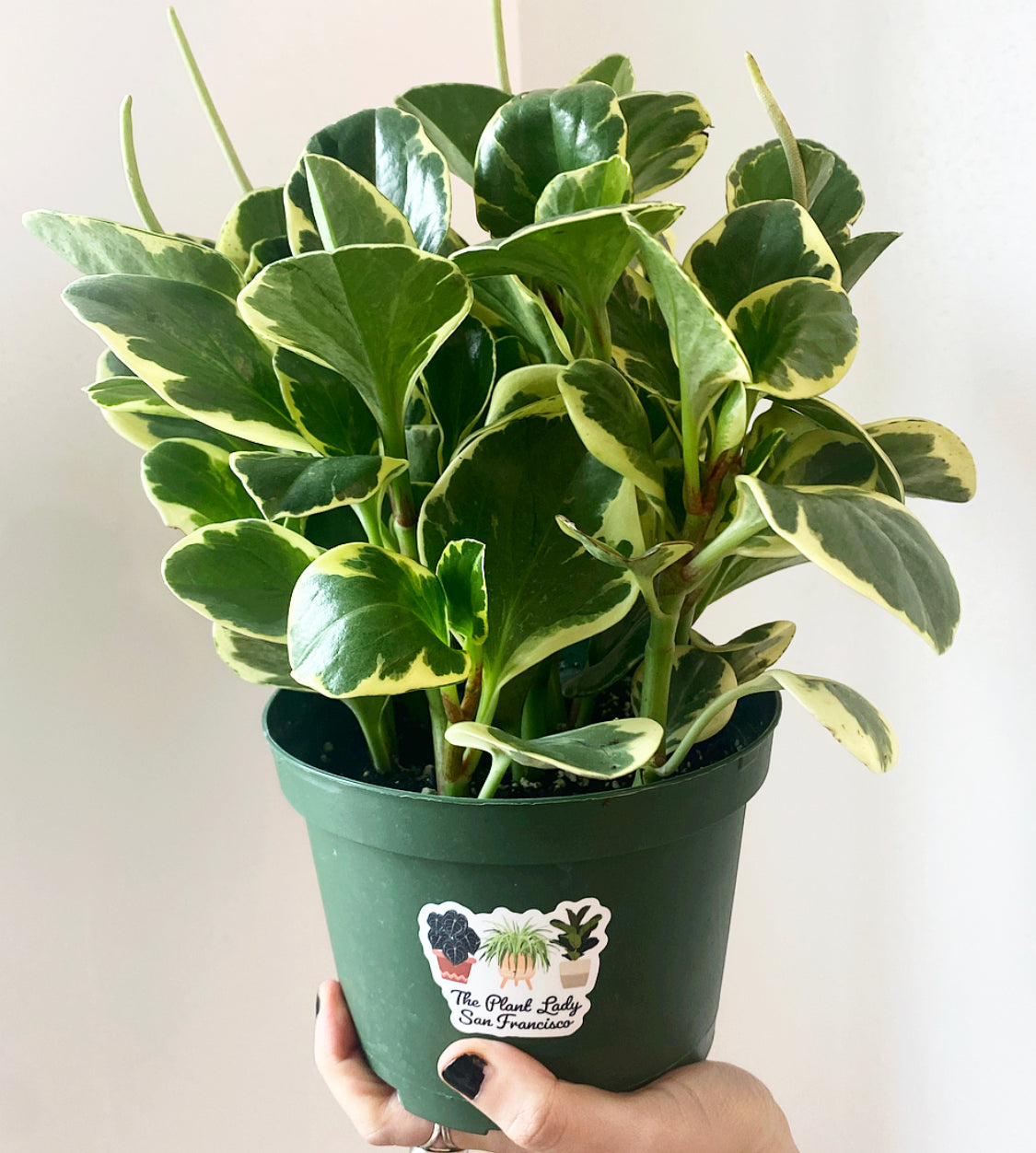
Peperomia Obtusifolia Care Guide
Following the right care guide for your peperomia obtusifolia increases your chances of landing a healthy plant in no time. Below is the necessary information to get it right with your baby rubber plant.
1. Light
The peperomia obtusifolia will benefit from bright, indirect light. This light will aid in plant growth and dark green color retention. Your baby rubber plant’s stems may become lanky and dull, and its leaves may begin to fade if it receives insufficient sunlight.
Similarly, exposing them to too much sunshine might cause their leaves to burn. The eastern or western window is recommended for your plant’s light needs; however, it should be situated around 3 feet away from the window.
There should also be a sheer curtain between the window and the plant; this will filter the light before it reaches the plant. Alternatively, you can place your baby rubber plant in the morning sun for a few hours and then kept inside afterward.
2. Soil
Peperomia obtusifolia will grow best in aerated, well-draining, and rich soil. For this reason, it is best that when you are getting your soil, you combine materials that can help provide this. We recommend that you combine part peat moss and perlite.
You can also purchase a standard potting mix if you cannot combine these materials yourself. The soil you are using must be well-draining as the baby rubber plant is sensitive to overwatering, hence the use of perlite will increase the soil’s chances of draining water properly.
Overwatering is not only caused by giving your plant excess water, but also by having soil that isn’t well-draining.
3. Water
Watering the baby rubber plant will come easy for some reason, the first is that the succulent like leaves has ways of retaining moisture; also, the plant is mildly drought tolerant. However, you should not neglect it for these reasons.
The baby rubber plant has its watering needs, and it should be attended to with importance.
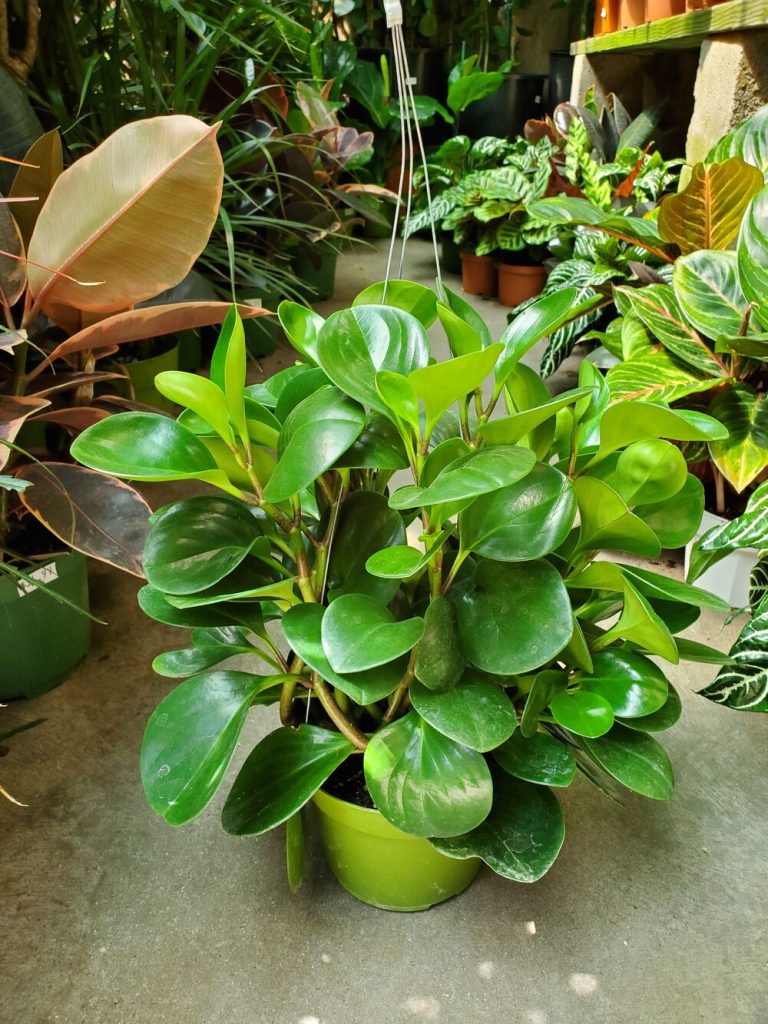
The best method to balance the plant’s watering needs and overwatering is to water the plant thoroughly first and then wait until the top 2 inches of the soil is dry, before you water again, this way, your plant stays moist, yet not overwatered.
Alternatively, you can water once in two weeks. Due to the form of the leaves, water does not easily fall off the surface and should not be watered. Keeping the leaves and stem wet for an extended period might lead to fungal infections. To water accurately, it is recommended that you use a watering can with a long, narrow neck.
4. Temperature
Although the obtusifolia will grow just fine at the regular room temperature in most places. The best temperature your baby rubber plant can be grown in is between 64 and 75 degrees F. temperatures higher than this or below 50 degrees F can gravely harm your plant.
Your peperomia obtusifolia is usually kept indoors; however, if you would like to grow them outdoor, in your garden, they should be grown in USDA zones 10 and 11. Avoid exposure to hot or cold drafts, as well as sudden temperature changes.
5. Humidity
The baby rubber plant will grow well in about 50% humidity, which means that the regular home humidity is just right for them. However, for people who live in places with hot and dry weather, it is recommended that they seek alternative means to increase humidity for their plants.
Placing your plant’s pot on a pebble tray is the easiest way to do this. Another efficient method is to group numerous plants, which generates a humid microenvironment for them when the water evaporates from the leaves.
6. Fertilizer
The obtusifolia, like many other peperomia plants, will thrive without fertilizer, but it is recommended that it be fertilized only during the growing season.
It’s also a good idea to use a balanced fertilizer with a 20-20-20 nutrition ratio, which you should dilute to half strength because feeding them full strength can be harmful to the plant. You shouldn’t fertilize in winter and autumn.
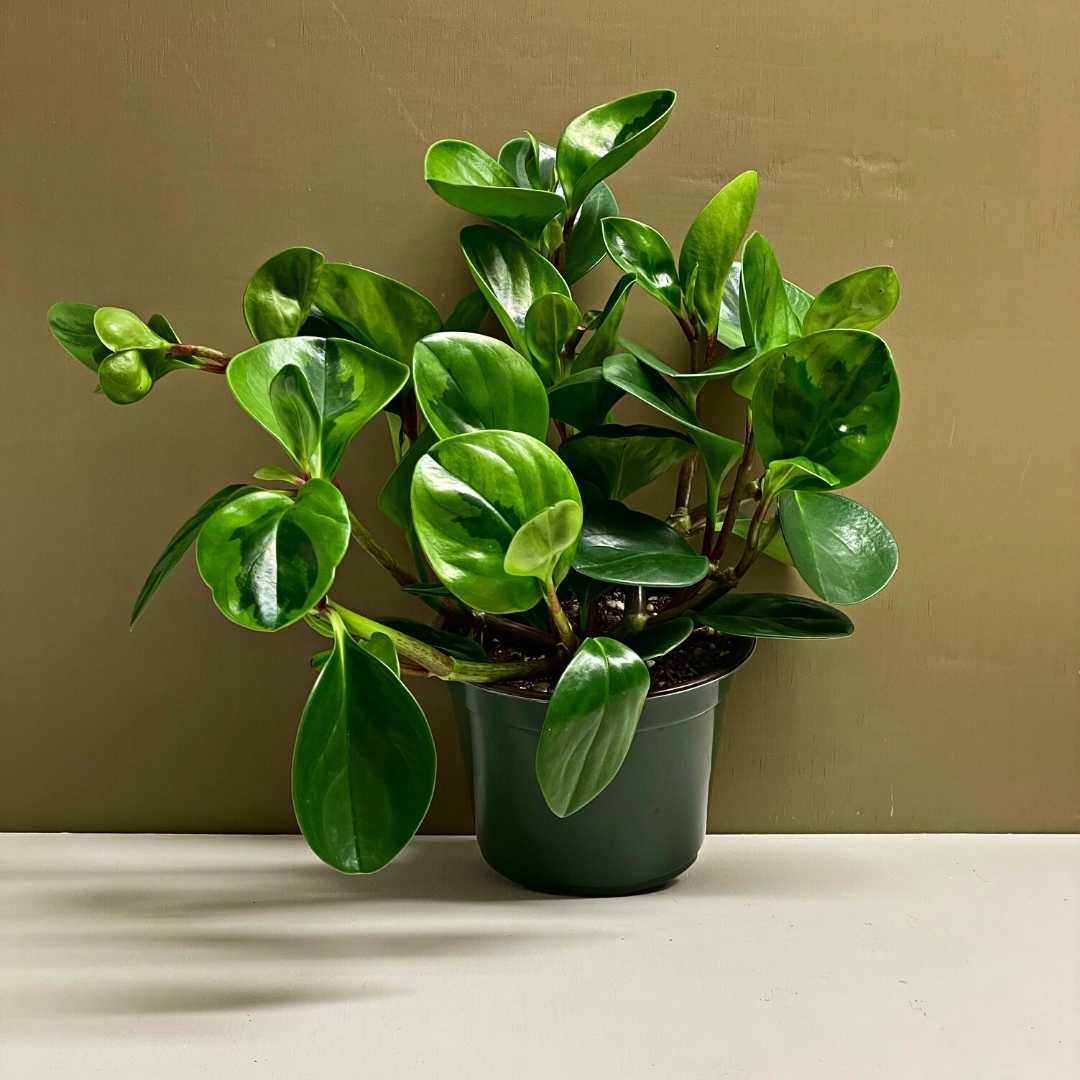
Growing Tips
- Pruning is essential for the baby rubber plant as it tends to become too long than required. Pruning helps give it a bushy look and keeps it in the right shape that you want.
- Sterilizing your gardening tools is as important as caring for them. Ensure to keep them sterilized so you do not transfer infections.
- The baby rubber plant has a shallow root; hence, repotting should be done once every two to three years.
- The best type of pot to use for your peperomia obtusifolia is either a clay or terracotta pot. These are good for root aeration than other types of pots.
- A drooping leaf is an indication that your plant needs to be watered, ensure to give them the needed water and follow the watering guide provided above.
FAQs
Growing or caring for the Peperomia Obtusifolia plant? Here are some of your burning questions answered.
Should I Mist My Peperomia Obtusifolia?
You can mist your plant as often as possible; this will help increase the humidity level in the air. However, misting is not exactly an effective way of increasing humidity. There are other ways to do this, and you can read the above.
When Should I Re-pot My Baby Rubber Plant?
Baby rubber plants love being root to bound, you may not need to re-pot them for years. If they do not outgrow their pot, then you should leave them in their pot. However, if their roots begin to come out of the pot’s drainage holes, then it is time to re-pot.
How Fast Does Peperomia Obtusifolia Grow?
When provided with the right care, the plant will grow moderately. However, in other cases where the plant is not treated right, it will grow slowly.
Is Peperomia Obtusifolia Poisonous To Pets And Humans?
The peperomia obtusifolia is not toxic both to pets and children, however, it is safe to keep your plant away from the reach of animals and little children. They can become curious and damage the plant.
Final Thoughts
Peperomia obtusifolia is one of the nicest peperomia plants to grow. The plant does well, both in pots and hanging, hence you have options on where to keep them. The care and propagation guide provided above will help increase your plant’s chances of success and good growth.
Rotate your plant as often as possible as this plant tends to grow towards the light source. If you do the right things, your plant will grow healthy and well.
More peperomia plant guides:

